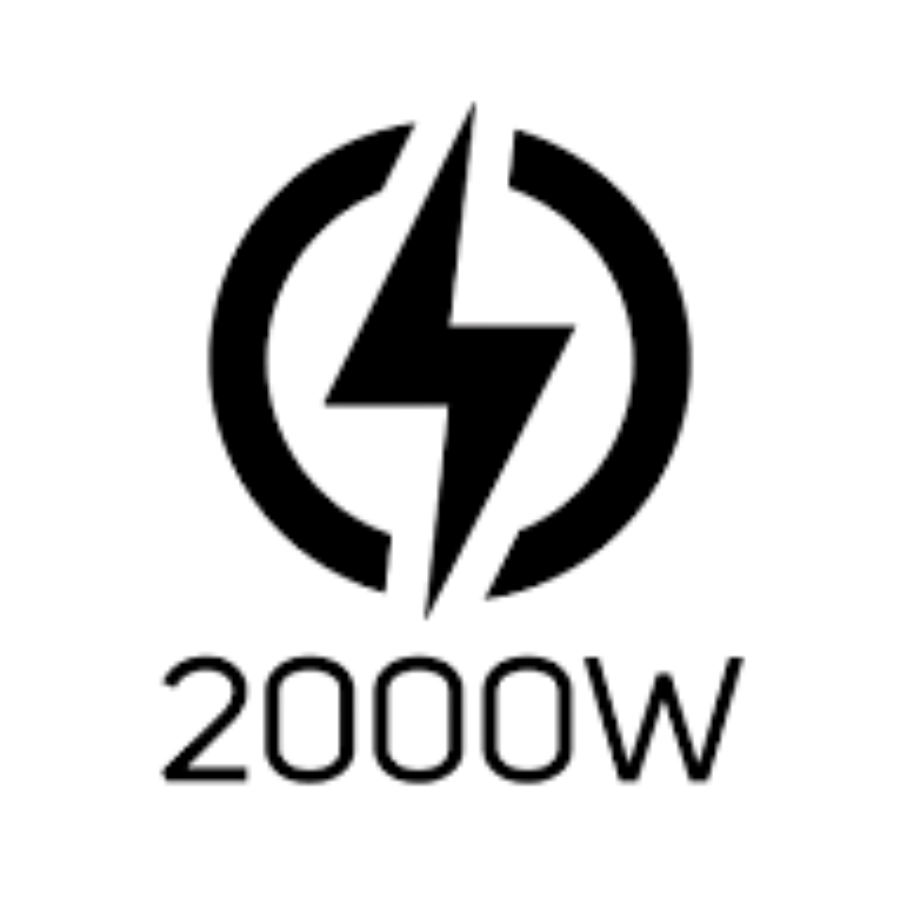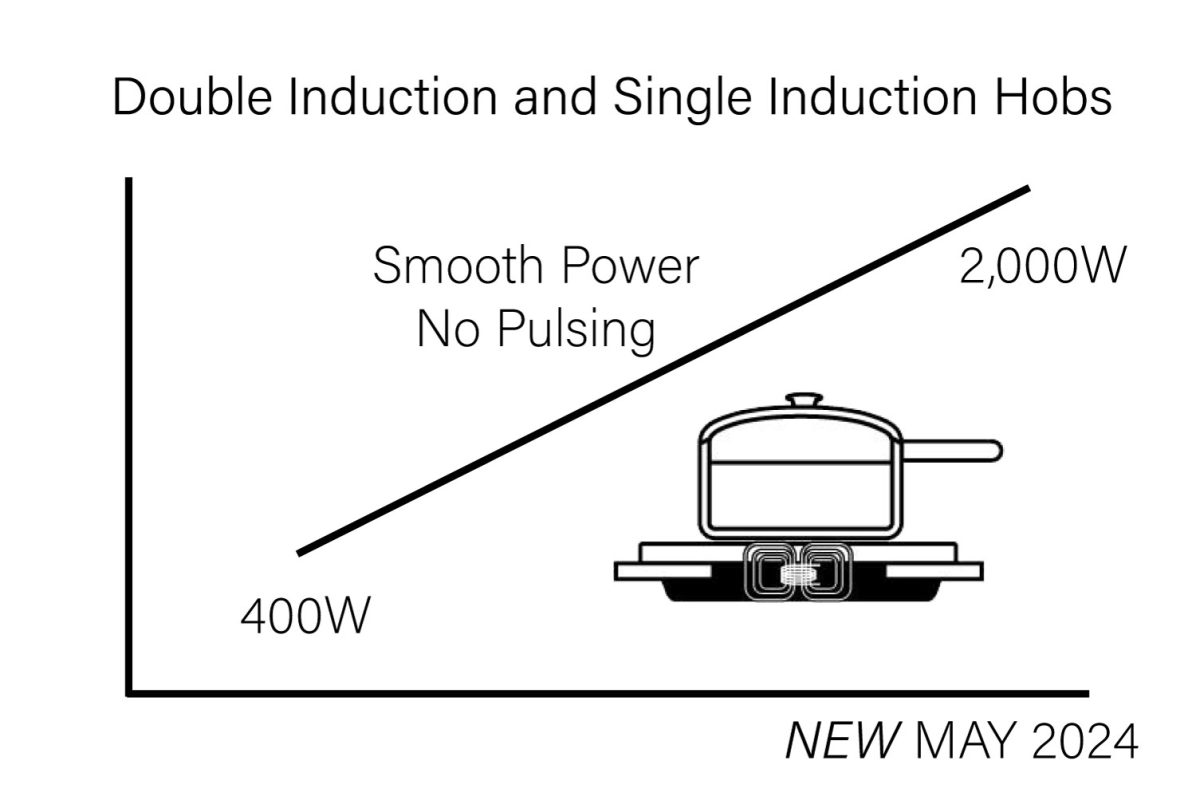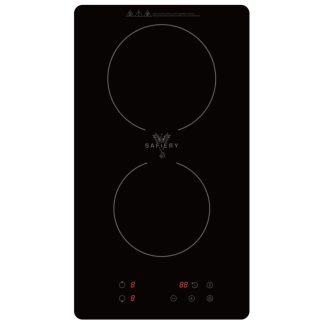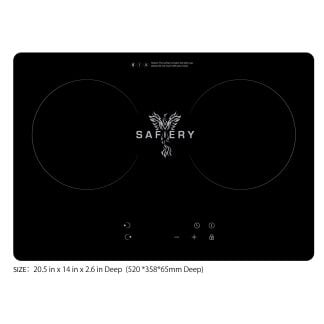AUD329.00 Original price was: AUD329.00.AUD249.00Current price is: AUD249.00.
Note: The price added to the cart is exclusive of GST.




SINGLE INDUCTION COOKTOP HAS NO PULSING 400W TO 2000W SMOOTH OPERATION
Using an induction with smooth power rather than pulsing power at low power levels offers several significant benefits:
1. Enhanced Control:
The continuous and stable power supply enables better control over the cooking. This precise control allows for accurate adjustments to the power level, ensuring optimal performance and desired outcomes in various applications.
2. Improved Efficiency:
Smooth power delivery in induction systems ensures a more efficient utilization of energy. By avoiding sudden spikes and drops in power, the system can operate more consistently, leading to better energy efficiency and reduced wastage.
3. Reduced Eddy Current Losses:
Eddy currents are minimized with smooth power delivery, as there are no abrupt changes in magnetic fields that can lead to losses. This reduction in eddy current losses contributes to higher overall efficiency in the system.
4. Minimized Heating Issues:
Pulsing power can sometimes lead to localized heating in the system, which may affect components and reduce their lifespan. With smooth power delivery, the risk of overheating is reduced, promoting longevity and reliability of the equipment.
5. Consistent Heating:
In processes that require precise and uniform heating, such as in induction cooking or industrial applications, smooth power delivery ensures consistent heating throughout the material. This results in better quality outcomes and improved process control.
6. Noise Reduction:
Pulsing power can generate electromagnetic interference and audible noise in induction systems. By utilizing smooth power delivery, noise levels can be reduced, creating a quieter working environment and minimizing disruptions.
7. Extended Equipment Lifespan: The stable power supply provided by induction cooktops with smooth power helps in prolonging the lifespan of induction equipment. Reduced stress on components and consistent operation contribute to increased durability and reduced maintenance requirements.
In conclusion, opting for double induction with smooth power at low power levels offers a range of benefits including improved efficiency, enhanced control, reduced losses, minimized heating issues, consistent heating, noise reduction, and extended equipment lifespan. These advantages make this approach a favorable choice for applications where precision, reliability, and energy efficiency are paramount.

Compact 276 x 366 mm Design
2000W SAA Approved Induction Cooktop:
Induction cooking:
SPECIALLY DESIGNED FOR RV’s
Most Induction cooktops are designed for home kitchens requiring significant power and not for RV’s…..
USING ON A LOWER RATED INVERTER
If your inverter struggles on 2,000W or simply is a smaller size like 1600W, you can still use this induction cooktop as follows:
Safiery Single Hob Compact Built-in induction cooktop that you can safely operate with a 2,000W Inverter.

SINGLE INDUCTION COOKTOP HAS NO PULSING 400W TO 2000W SMOOTH OPERATION
Using an induction with smooth power rather than pulsing power at low power levels offers several significant benefits:
1. Enhanced Control:
The continuous and stable power supply enables better control over the cooking. This precise control allows for accurate adjustments to the power level, ensuring optimal performance and desired outcomes in various applications.
2. Improved Efficiency:
Smooth power delivery in induction systems ensures a more efficient utilization of energy. By avoiding sudden spikes and drops in power, the system can operate more consistently, leading to better energy efficiency and reduced wastage.
3. Reduced Eddy Current Losses:
Eddy currents are minimized with smooth power delivery, as there are no abrupt changes in magnetic fields that can lead to losses. This reduction in eddy current losses contributes to higher overall efficiency in the system.
4. Minimized Heating Issues:
Pulsing power can sometimes lead to localized heating in the system, which may affect components and reduce their lifespan. With smooth power delivery, the risk of overheating is reduced, promoting longevity and reliability of the equipment.
5. Consistent Heating:
In processes that require precise and uniform heating, such as in induction cooking or industrial applications, smooth power delivery ensures consistent heating throughout the material. This results in better quality outcomes and improved process control.
6. Noise Reduction:
Pulsing power can generate electromagnetic interference and audible noise in induction systems. By utilizing smooth power delivery, noise levels can be reduced, creating a quieter working environment and minimizing disruptions.
7. Extended Equipment Lifespan: The stable power supply provided by induction cooktops with smooth power helps in prolonging the lifespan of induction equipment. Reduced stress on components and consistent operation contribute to increased durability and reduced maintenance requirements.
In conclusion, opting for double induction with smooth power at low power levels offers a range of benefits including improved efficiency, enhanced control, reduced losses, minimized heating issues, consistent heating, noise reduction, and extended equipment lifespan. These advantages make this approach a favorable choice for applications where precision, reliability, and energy efficiency are paramount.

Compact 276 x 366 mm Design
2000W SAA Approved Induction Cooktop:
Induction cooking:
SPECIALLY DESIGNED FOR RV’s
Most Induction cooktops are designed for home kitchens requiring significant power and not for RV’s…..
USING ON A LOWER RATED INVERTER
If your inverter struggles on 2,000W or simply is a smaller size like 1600W, you can still use this induction cooktop as follows:
Safiery Single Hob Compact Built-in induction cooktop that you can safely operate with a 2,000W Inverter.
Lorem ipsum dolor sit amet, consectetur adipiscing elit. Ut elit tellus, luctus nec ullamcorper mattis, pulvinar dapibus leo. Lorem ipsum dolor sit amet, consectetur adipiscing elit. Ut elit tellus, luctus nec ullamcorper mattis, pulvinar dapibus leo.
Lorem ipsum dolor sit amet, consectetur adipiscing elit. Ut elit tellus, luctus nec ullamcorper mattis, pulvinar dapibus leo. Lorem ipsum dolor sit amet, consectetur adipiscing elit. Ut elit tellus, luctus nec ullamcorper mattis, pulvinar dapibus leo.
Lorem ipsum dolor sit amet, consectetur adipiscing elit. Ut elit tellus, luctus nec ullamcorper mattis, pulvinar dapibus leo. Lorem ipsum dolor sit amet, consectetur adipiscing elit. Ut elit tellus, luctus nec ullamcorper mattis, pulvinar dapibus leo.



Safiery creates power, energy, switching products so people enjoy adventure travel globally on land or water without a genset.
Username or Email*
Password*
Select at least 2 products
to compare